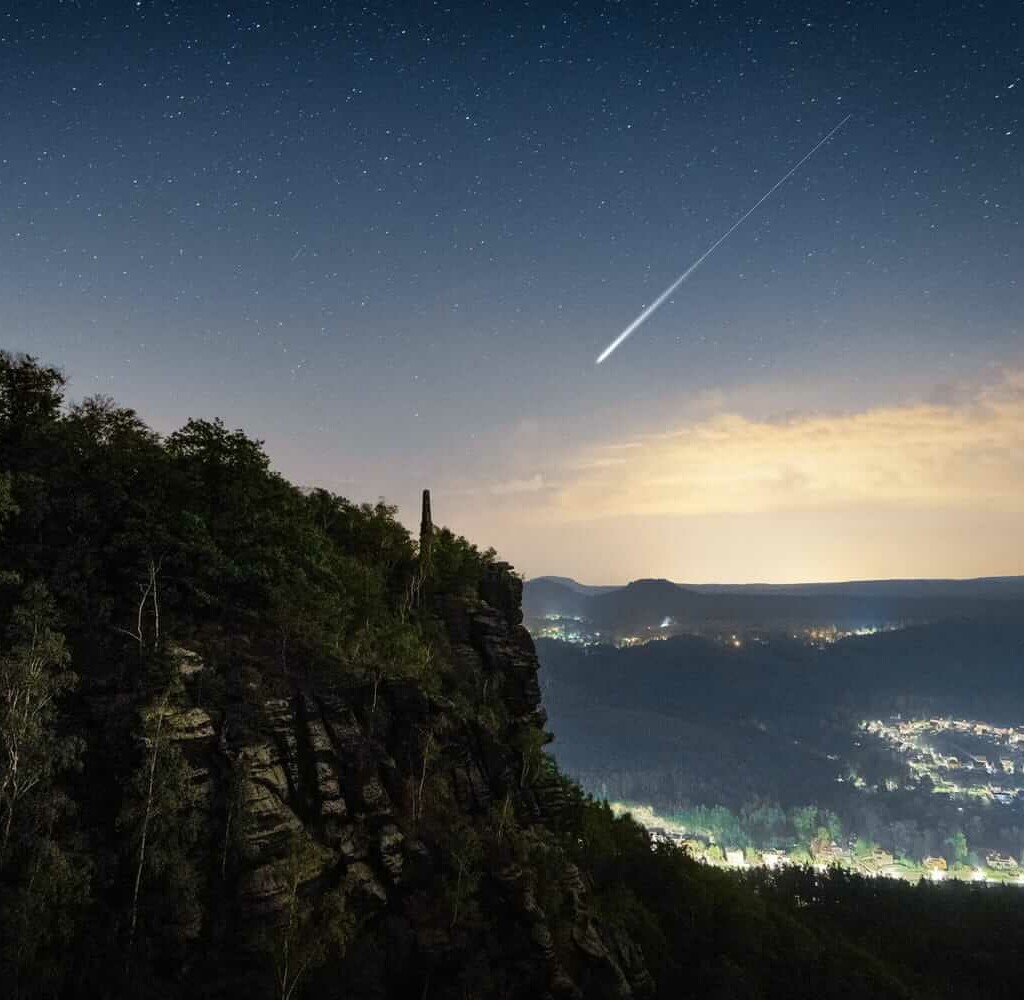The night sky offers an array of spectacles, but few captivate as compellingly as the Orionid meteor shower. This phenomenon, arresting the attention of both astronomy enthusiasts and casual stargazers, serves as a portal to the vast and mysterious universe that envelops us.
The Orionids and Their Connection to Halley’s Comet: An Unparalleled Astronomical Event
So, what elevates the Orionids above the ordinary, and how do they relate to cosmic history? Let’s delve into the details.
Since time immemorial, humankind has been captivated by celestial phenomena. Meteor showers like the Orionids rank among these events, owing to their unique beauty and the scientific mysteries they hold. Their origin is tied to cosmic debris that connects us to the history of the solar system.
A Link to Halley’s Comet
The Orionids are not merely errant rocks in space; they are fragments originating from the renowned comet 1P/Halley. This comet is among the most famous, thanks to Edmond Halley, who in 1705 successfully predicted its 76-year return cycle.
The comet was last sighted in 1986, and its reappearance is anticipated in 2061. Each time Halley’s Comet orbits close to the Sun, it leaves behind a trail of debris and gases. When these elements interact with Earth’s atmosphere, they trigger the Orionid phenomenon.
Characteristics of the Orionids
These meteoroids travel at breakneck speeds, reaching up to 238,000 kilometers per hour. As they penetrate Earth’s atmosphere, they produce luminous phenomena known as “light trains”—luminous streaks that can last several seconds or even longer.
In exceptional cases, if the meteoroid is substantial in size, these light trains can transform into fireballs.
Optimal Time and Location for Observation
The event generally occurs between October 2 and November 7. However, its peak activity happened on October 21. During this period, one can observe up to 15 meteors per hour. For an optimal experience, it’s advisable to distance oneself from areas with light pollution and to be equipped with optical instruments like binoculars or telescopes.
In addition to their mesmerizing visual display, the Orionids hold considerable scientific value. Studying the composition of these meteoroids provides clues about Halley’s Comet and the conditions of the early solar system. Moreover, various cultures have attributed mystical or spiritual significance to this phenomenon, considering it an omen or a divine message.
Once the peak of Orionid activity has passed, more celestial events lie on the horizon. The Taurid and Leonid meteor showers make their appearance in November, continuing the heavenly spectacle commenced by the Orionids.
There’s no doubt that the Orionid meteor shower is a phenomenon that captures the imagination and arouses curiosity. Connecting us to cosmic history while offering an awe-inspiring visual show, the Orionids serve as a reminder of the wonder and complexity of the universe we inhabit.
Shooting Star Significance — Folk Beliefs Surrounding Meteor Events
When a meteoroid enters Earth’s atmosphere, it burns up, creating a bright streak of light in the sky called a meteor. On the rare occasions that a meteor withstands the intense heat and lands on Earth, the residual fragments are identified as meteorites… read more>>





